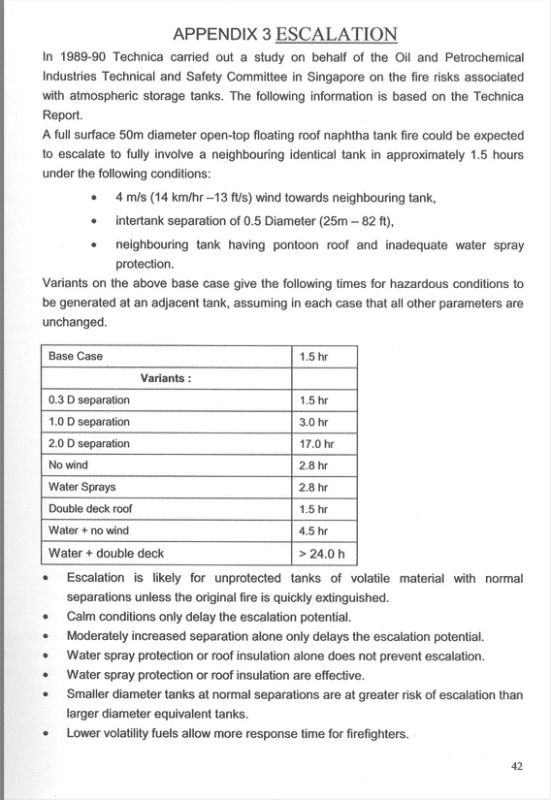is this correct According to NFPA 30, the recommended minimum separation distances between crude oil tanks are as follows:
For non-fire-resistance-rated tank construction:
For tanks with a capacity of more than 15,000 gallons (56,780 liters), the separation distance should be a minimum of 1.5 times the diameter or 15 meters, whichever is greater.
For fire-resistance-rated tank construction:
For tanks with a capacity of more than 15,000 gallons (56,780 liters), the separation distance should be a minimum of 0.75 times the diameter or 7.5 meters, whichever is greater.
As I check NFPA 30 2018 edition and don't found things like that , on other hand I found NFPA 30 table give separation distances range from 1/3 D to 1/6 D which is very small compared with GAP requirements which range in 1 to 1.5 D
Best regards
For non-fire-resistance-rated tank construction:
For tanks with a capacity of more than 15,000 gallons (56,780 liters), the separation distance should be a minimum of 1.5 times the diameter or 15 meters, whichever is greater.
For fire-resistance-rated tank construction:
For tanks with a capacity of more than 15,000 gallons (56,780 liters), the separation distance should be a minimum of 0.75 times the diameter or 7.5 meters, whichever is greater.
As I check NFPA 30 2018 edition and don't found things like that , on other hand I found NFPA 30 table give separation distances range from 1/3 D to 1/6 D which is very small compared with GAP requirements which range in 1 to 1.5 D
Best regards

